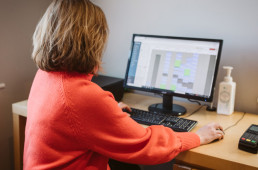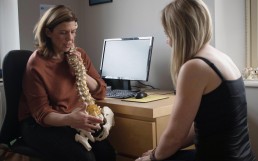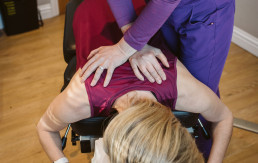My first visit
The first visit lasts about one hour. Initially, we will take a thorough medical case history, before carrying out a full physical examination.
01
Case history
We will ask you detailed questions about your symptoms and how they are affecting your life. We will also ask you about your general health, including any previous illnesses, accidents or surgery, and about your family health history. This information feeds into the diagnostic process.


02
Physical examination
We do this to find the cause of the problem you are experiencing. It may include observation of your posture, range of motion and movement patterns, palpation of the joints and muscles, testing muscle strength and specific neurological and orthopaedic tests.
03
Explanation of findings
Having put all the pieces of the puzzle together, we explain what’s causing your symptoms, what we can do about it, and how many treatments we think you may need to make you feel better (this varies depending on the nature of your condition, how long you’ve had it and how severe it is.) You can ask questions and decide whether you want to proceed with treatment. If, after examination, we decide that treatment is not appropriate, we’ll explain why, and with your permission, will refer you to another health care professional, such as your GP or an orthopaedic surgeon, or for further investigation such as an x-ray, ultrasound or MRI.


04
Treatment
For most people, treatment will begin immediately. Treatment may include spinal manipulation, mobilisation, soft tissue work, including trigger point therapy, dry needling and stretches, and exercise prescription. Pointers are given to enable you to take an active role in your recovery and avoid future relapses.
Subsequent visits
These sessions last half an hour. We ask how you’re feeling, and treat accordingly. Depending on your progress, we may revise the initial treatment plan, and shift the focus towards preventing future relapses, through home exercises, ergonomic and lifestyle advice. Once you feel better, you may opt for maintenance treatment, receiving regular check-ups to keep your spine in good working order. It’s a bit like getting your teeth checked periodically at the dentist, or having your car MOT’d, except of course, you can replace teeth and cars, while your spine is irreplaceable. However, the decision as to whether you decide to embark on maintenance care is entirely your own.
